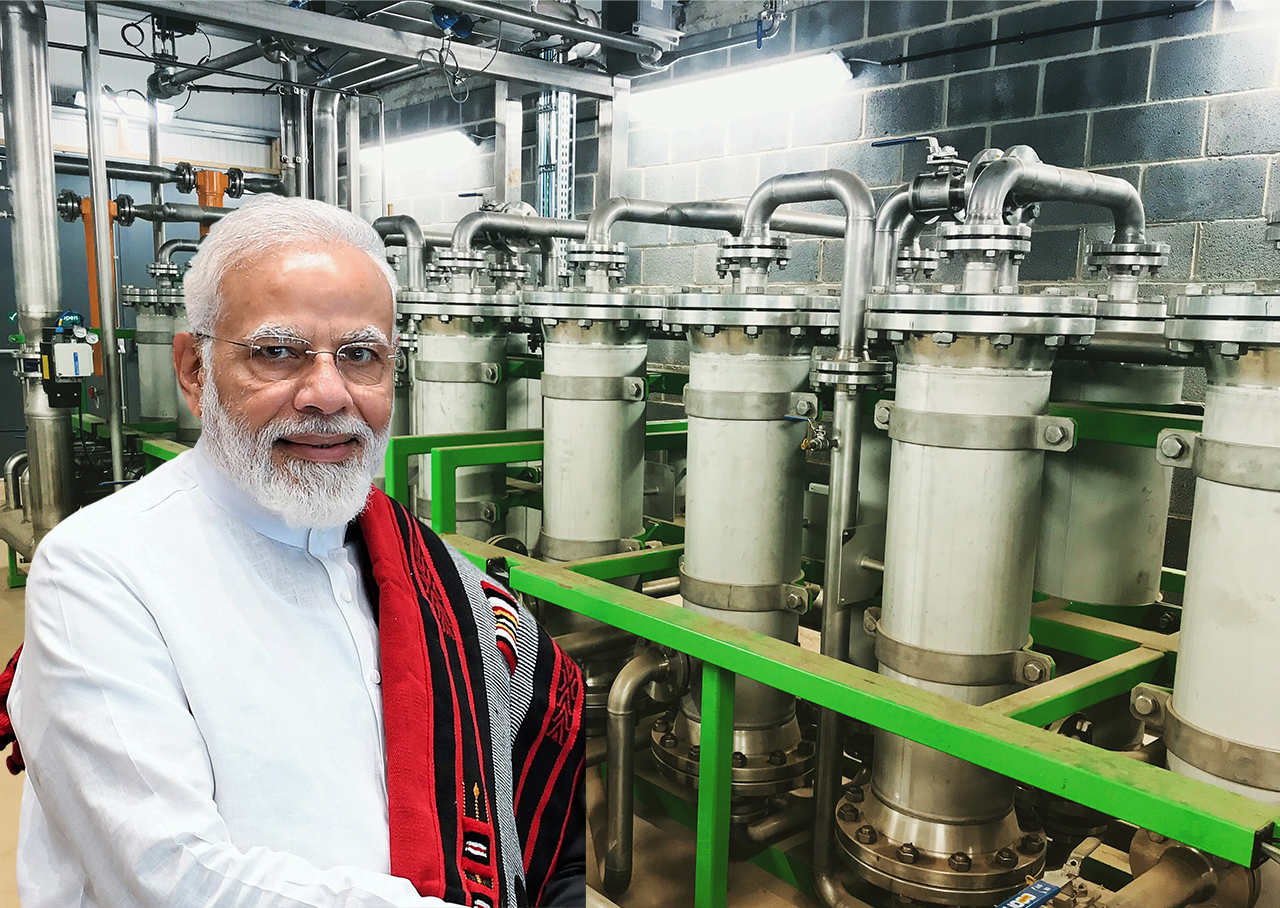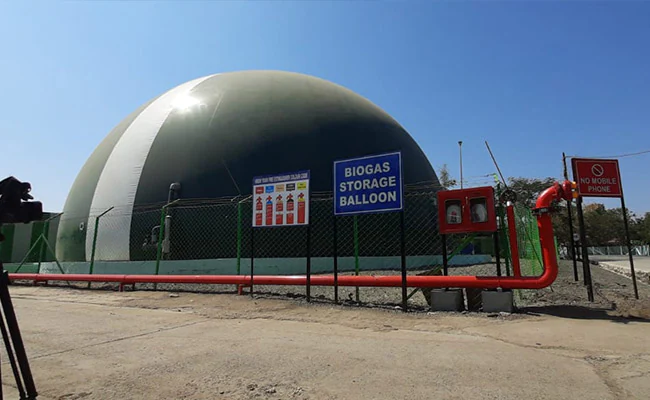
Over the years, India has become one of the biggest investors in renewable energy. This has resulted in the construction and deployment of dozens of large-scale power plants that utilize different forms of renewable energy, to help reduce our reliance on fossil fuels. This past weekend, Prime Minister Narendra Modi inaugurated another such important project, which has the distinction of being Asia’s Largest Bio-CNG plant.
Located in the Indore district of Madhya Pradesh, this plant was developed as part of the Swachh Bharat-2 campaign, aimed at removing piles of organic waste from various garbage dumps located in almost all major cities in our nation.
By separating and utilizing the organic waste, we will also be sorting out all the plastic garbage, thus creating opportunities for further recycling. This will also have the added bonus of reclaiming these garbage dumps and turning them into green zones.
As a means of showcasing the viability of this initiative, the Indore Municipal Corporation ensured that they use an existing dumping zone to set up the 15-acre campus that is now the continent’s biggest renewable Bio-CNG production facility.
This plant has been nicknamed the ‘Gobar-Dhan plant’, as it is part of the central government’s wealth-to-waste initiative. The PM himself said, “Whether it is the wet waste that comes out of the houses in the city or the garbage from the livestock and farms in the village, all this is gobar dhan in a way. From city’s waste and livestock to gobar dhan, from gobar dhan to clean fuel, and again from clean fuel to energy, the chain creates Jivan Dhan”.
The process of creating this ‘Jivan Dhan’ starts with the collection of waste from various parts of the city. This includes various forms of human activity generated, as well as cow dung, which helps provide necessary bacteria for decomposition.
The state government plans to offer the waste collection services for free, while the cow dung procurement will actually be a paid initiative that will help increase the income of the farmers in nearby villages.
To make this happen, the government is planning to equip over 1600 municipalities with material management facilities, to make it easy to recycle organic waste and end the spread of single-use plastics.
All the collected waste will be sent to this plant, where over 550 tons of wet waste will be processed every day and converted into 19,000 kg of usable bio-CNG. In addition, the process will also generate 100 tons of high-quality compost every day, which will be circulated back to the farmers to further reduce their expenses.
The state government already plans to buy half of the usable bio-CNG at a price of Rs.5 per kg, to help power over 400 city buses. This will not only reduce the fuel required to run the transport system but also cut down on the operational costs as well.

Picture Credit: NDTV
The rest will be sold to various industries as an energy source, currently fixed at a rate of Rs 77 per kg. Thus, accomplishing the zero-landfill model that the government aims to adopt with such ventures.
While the raw material is being collected and transported by the government itself, the building and operations of this plant are the responsibility of a private company, called Indo-Enviro Integrated Solutions Ltd. They entered this deal on a public-private partnership (PPP) model and put up over Rs 150 crore for the construction of the project.
This gives them the right to produce and sell the bio-CNG created in this plant. At the same time, they will also be paying the Indore Municipal Corporation over Rs 2.5 crore per annum, for the next 20 years, for their waste collection services.
Even at current capacity, this single plant will help mitigate over 1,30,000 tons of carbon dioxide annually, by diverting it into renewable energy. This makes this a win-win-win scenario for all parties involved.
The government also recognizes the benefits of such ventures, which is why they are planning to set up over 75 such bio-CNG plants in the next 2 years. This will help drastically change the energy landscape of the nation, as well as help as reduce toxic air pollution that happens when all this organic waste is dumped untreated into such landfills, thus, resulting in the release of landfill biogas and various other pollutants.
The best thing about this model is that we have barely tapped the energy potential of biogas, with the current installed capacity only utilizing about 2.5% of the total potential CNG that could be extracted from all the organic waste we generate each year.
Even if we only focus on just the agricultural residue and livestock dung that is generated in our country. That still comes out to over 75 billion cu.m a year. This roughly translates to over 80,000 tons of Bio-CNG per day. By diverting all that waste to plants like this, we can easily meet the dream of doubling farmers’ income in the coming future, while also helping India reach its goal of being net carbon neutral by 2070.
Here’s Why the New Indore Bio-CNG Plant Is Likely to Succeed – Though Others Like it Haven’t
Leave a Reply